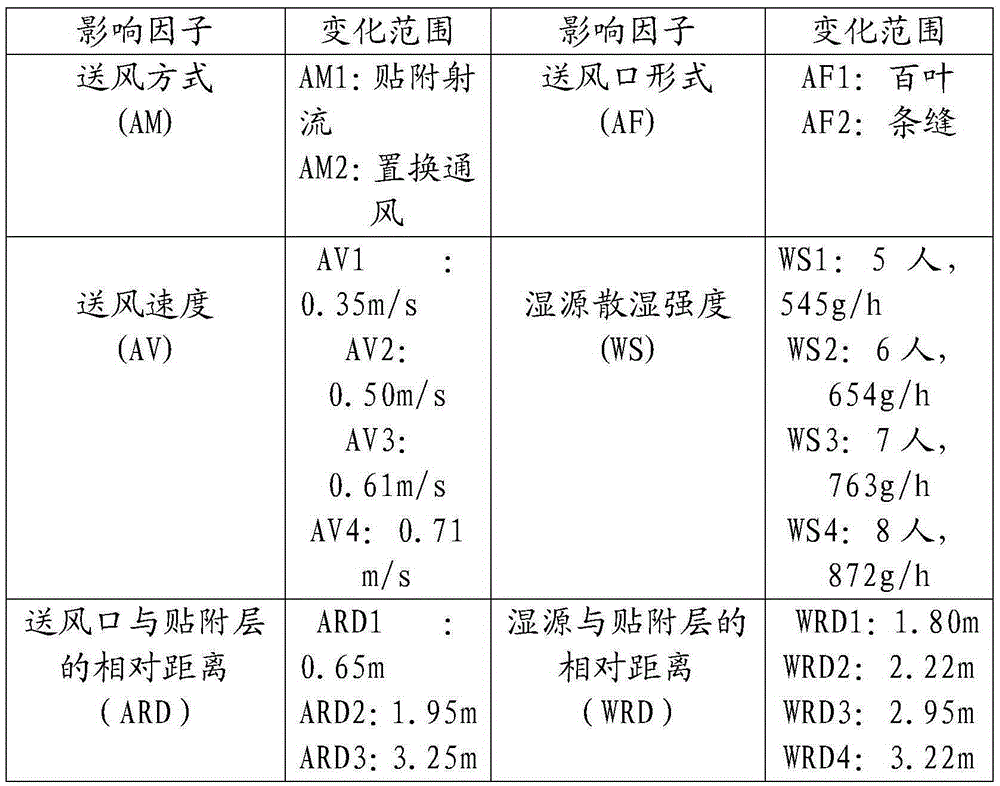Method for determining dynamic change rule of dew point temperature of attached layer of radiant ceiling
A dew point temperature, dynamic change technology, used in special data processing applications, instruments, electrical digital data processing and other directions, can solve problems such as the inability to effectively prevent condensation and the decline in cooling capacity of radiant panels
- Summary
- Abstract
- Description
- Claims
- Application Information
AI Technical Summary
Problems solved by technology
Method used
Image
Examples
Embodiment Construction
[0025] The present invention will be further described below.
[0026] 1) Determine the influencing factors of the dynamic change law of the dew point temperature of the attached layer
[0027] At present, there are few studies on moisture diffusion in the field of HVAC, and moist air can be approximately regarded as an ideal gas, and the transport equation of its propagation is the same as that of passive gas pollutants. The mathematical description is also similar, so the factors that affect the diffusion of passive gas pollutants can be used for reference to indirectly determine the factors that affect the diffusion of humid air, and then study the influence of different influencing factors on the dynamic change law of the dew point temperature of the attached layer.
[0028] There are three accessibility degrees (that is, three influencing factors) that affect moisture diffusion, namely, the accessibility of supply air, the accessibility of initial conditions, and the acce...
PUM
 Login to View More
Login to View More Abstract
Description
Claims
Application Information
 Login to View More
Login to View More - R&D
- Intellectual Property
- Life Sciences
- Materials
- Tech Scout
- Unparalleled Data Quality
- Higher Quality Content
- 60% Fewer Hallucinations
Browse by: Latest US Patents, China's latest patents, Technical Efficacy Thesaurus, Application Domain, Technology Topic, Popular Technical Reports.
© 2025 PatSnap. All rights reserved.Legal|Privacy policy|Modern Slavery Act Transparency Statement|Sitemap|About US| Contact US: help@patsnap.com

